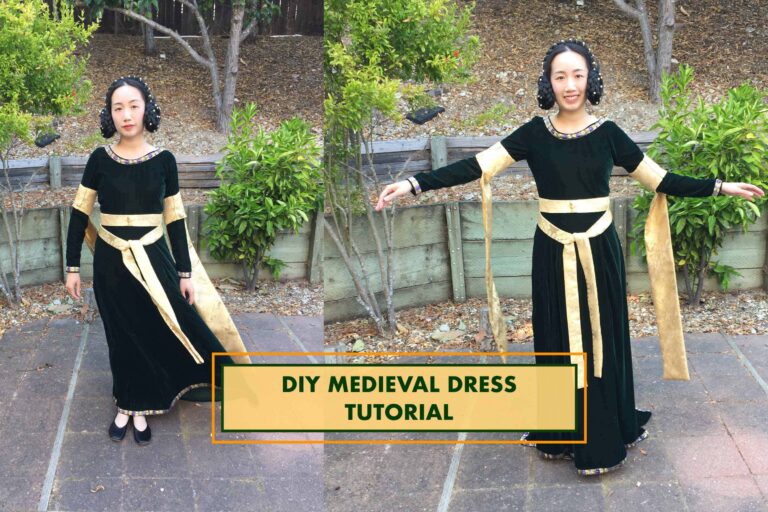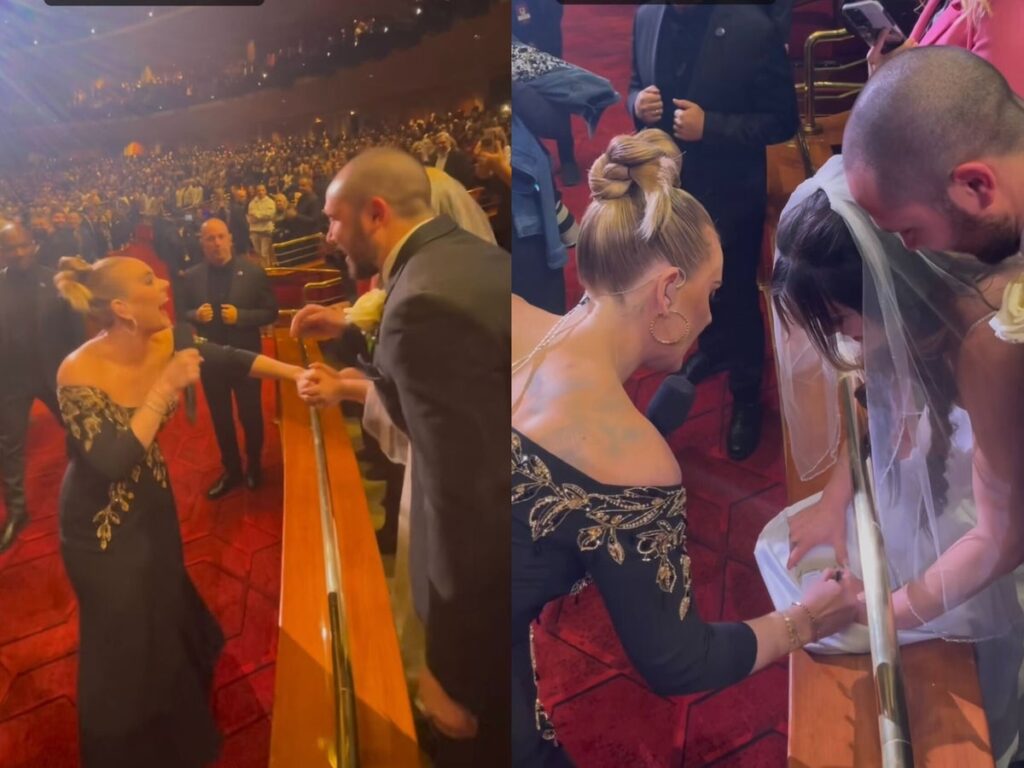To attend medieval times, wear medieval-style clothing, like a tunic or dress, with comfortable shoes. Medieval times is a popular dinner and entertainment experience that takes you back to the era of knights, kings, and queens.
If you’re planning to attend medieval times, one of the most exciting things to consider is what to wear. To get into the spirit of things, it’s best to dress in medieval-style clothing that is both comfortable and functional. This can include a tunic, dress, or other attire that features flowing fabrics, vests, and cloaks.
Keep in mind that you will be sitting and eating, so comfortable shoes are essential. Whether you’re dressing up for a special occasion or just want to embrace your inner medieval enthusiast, there are plenty of options available to help you look and feel the part.

Credit: www.youtube.com
Essential Elements Of Medieval Attire
Are you excited to attend a medieval times event but unsure about what to wear? The key is to dress in authentic medieval attire that will transport you back to the middle ages. In this section, we will cover the essential elements of medieval attire, breaking it down into clothing for men and women, and how to choose the best material for your medieval attire.
Clothing For Men And Women:
Men’S Clothing:
Medieval men’s clothing was simple yet functional. It served the purpose of protecting the wearer from the harsh weather conditions while being comfortable. Here are some essential elements of men’s medieval clothing:
- Tunic or shirt
- Breeches or hose
- Coif or cap
- Doublet or jerkin
- Cloak or mantel
Women’S Clothing:
Medieval women’s clothing was colorful and elegant, but it also had to be practical. Women often wore long, flowing dresses, making it easier to move around. Here are some essential elements of women’s medieval clothing:
- Gown or dress
- Chemise or shift
- Headwear like a veil or wimple
- Apron or surcoat
- Cloak or mantle
How To Choose The Best Material For Your Medieval Attire:
Choosing the right material for your medieval attire can make all the difference in your comfort level. Here are some key points to consider when selecting the right fabric:
- Natural fabrics like wool and linen were commonly used during the middle ages. Choose these over synthetic materials.
- Dressing in several layers of clothing was common in the middle ages, so choose lightweight materials that allow for layering.
- For warmer temperatures, opt for lightweight fabrics that breathe, such as cotton or silk.
- For colder temperatures, choose heavier fabrics like wool or velvet.
Dressing up in authentic medieval attire is a fun and interactive way to experience history. By following these essential elements of medieval attire, you’ll be well-prepared for your next event.
Choosing The Right Medieval Attire Based On Your Role
Are you attending a medieval times event but don’t know what to wear? Choosing the right medieval attire is crucial to getting the most out of your experience. The attire you don can influence how you’re perceived and make you feel like you’re part of the festivity.
We’ll help you discover which medieval role you’d like to take on and give you tips on choosing the right attire based on your role.
Common Roles At Medieval Times Events
Medieval times events are usually centered around specific themes, and everyone who attends is usually assigned a role to play. Here are some of the common roles people play at medieval times events:
- Royalty: These are usually people who are assigned the role of kings, queens, or princes. They’re usually expected to look regal and commanding.
- Nobleman/woman: These are individuals assigned to play the role of wealthy aristocrats. They are expected to look opulent and rich.
- Peasants: These are individuals assigned to play the role of the average medieval citizen. They’re usually expected to look poor and downtrodden.
- Knights: These are individuals assigned to play the role of medieval warriors. They usually wear armor or chainmail and are expected to look fearsome.
Tips For Choosing The Perfect Attire Based On Your Role
Choosing the right medieval attire can be confusing, but with a bit of guidance, you can get it right. Here are some tips on choosing the perfect attire based on your role:
- Research: Before selecting your attire, research your assigned role to get a better idea of what’s expected of you. Look up images of medieval attire to get inspiration and ensure you choose an outfit that is appropriate for your assigned role.
- Comfort: The wrong attire can not only ruin your day but can also make you feel uncomfortable. Ensure the apparel you choose is comfortable and easy to move around in. Remember, you’ll be wearing your outfit for hours on end, so comfort is key.
- Accessories: Accessories make a huge difference to your outfit. If you’re playing the role of royalty, you can spice up your outfit with a crown, scepter, or a fur shawl. If you’re a peasant, rough and rugged accessories like a wooden bucket or basket can add realism to your character.
- Colors: Medieval attire is known for its beautiful colors. When selecting your outfit, consider the appropriate colors for your assigned role. Royalty is usually associated with deep reds, purples, and gold. Knights are known to wear bold colors like black, silver, and gold. Peasants usually wear earthy colors like brown, beige and green.
- Shoes: Choose your shoes wisely. Medieval attire is complete with the right footwear. Peasants usually wear boots or sandals, knights wear knee-high leather boots, while royalty wears shoes made with fine quality leather.
- Hairstyle: Your hairstyle plays a huge role in completing your outfit. If you’re playing the role of royalty, don’t forget to style your hair in an updo or braid. If you’re a knight, you can leave your hair long and untied. If you’re a peasant, messy and rugged hairdos are acceptable.
Attending a medieval times event is an exciting experience, and the right attire can make the experience even more thrilling. Choose your outfit wisely, follow the tips above, and you’ll be sure to make an impression!
Diy Medieval Attire
Medieval times are known for their distinctive fashion. If you have a medieval-themed occasion coming up, you’ll want to dress appropriately. But don’t worry about purchasing an expensive outfit; instead, opt for diy medieval attire. With a few simple steps, you can create an authentic and budget-friendly look.
Steps For Creating Your Own Medieval Attire
To make your own medieval attire, follow these easy steps:
- Choose the right fabric: Medieval clothing was typically made of natural materials like linen, wool, and cotton. Opt for similar fabrics to ensure an authentic look.
- Get the patterns: Patterns are crucial when it comes to medieval attire. You can either purchase a pattern online, or make one yourself by tracing an existing piece of clothing.
- Sew the garment: Once you have the pattern and fabric, it’s time to put together your outfit. If you’re new to sewing, find simple patterns that are easy to work with. A tunic and leggings are basic medieval pieces that are relatively easy to sew.
- Accessorize: Don’t forget to accessorize! Add a leather belt, a cloak, and perhaps a hat to complete your medieval look.
Tips For Choosing The Right Fabric
Choosing the right fabric is essential for creating an authentic medieval look. Here are a few tips to follow while selecting:
- Look for natural fabrics like linen, wool, and cotton. Synthetic materials were not used in medieval times.
- Consider the weight and texture of the fabric. Heavier fabrics like wool are great for colder climates, while lightweight linen is better for warmer weather.
- Pay attention to the color of the fabric. In medieval times, bright colors were reserved for the upper classes, while muted tones were more common. Earthy tones like brown, green, and beige are ideal for a lower-class, peasant look.
Diy Accessories To Complement Your Outfit
Accessories play an important role in any medieval outfit. Here a few diy accessories you can make to complete your look:
- Leather belt: A simple leather belt can add character and authenticity to your outfit. You can make one using a length of leather and a buckle.
- Cloak: A cloak is a medieval staple that can keep you warm while adding a regal touch to your ensemble. You can make one with a large piece of fabric and some basic sewing skills.
- Hat: A hat with a wide brim or a pointed top can add a touch of flair to your outfit. You can sew one yourself or look for one at a thrift store.
With these simple steps and tips, you’re well on your way to creating your own diy medieval attire. You’ll have an outfit that’s not only authentic but unique and budget-friendly as well.
Where To Buy Medieval Attire
Where To Buy Medieval Attire:
Whether you’re attending a renaissance fair or a medieval-themed party, dressing the part can make all the difference. Fortunately, buying medieval attire is easier than you may think. From online retailers to renting options, there are plenty of options to choose from.
Here’s a breakdown of the best places to buy medieval attire.
Online Retailers:
Shopping for medieval attire online can be a convenient option. Here are some online retailers you can check out:
- Etsy: This popular marketplace offers a wide selection of handcrafted and vintage medieval attire, including dresses, tunics, cloaks, and accessories. You can find unique pieces that you won’t find anywhere else.
- Medieval collectibles: This online store offers a large selection of historically-inspired clothing, including costumes for men, women, and children. You can also find armor, weapons, and other accessories.
- Pearson’s renaissance shoppe: This online retailer offers a wide array of medieval clothing for men and women, including dresses, tunics, and corsets. They also have accessories such as jewelry and hats.
Specialized Costume Stores:
If you’re fortunate enough to live in an area that has a store specializing in costumes and theatrical attires, you’re in luck. Here are some of the biggest costume stores where you can find medieval attire:
- Spirit halloween: This is a large chain of costume stores in north america that offer a wide range of medieval attire, from simple dresses to detailed costumes.
- Party city: Another large chain of costume stores, party city has a decent selection of medieval costumes, including knights, maidens, and troubadours.
Second-Hand Stores:
If you’re on a budget, there’s no reason why you can’t find great medieval attire at second-hand stores. Here are some of the best places to check out:
- Thrift stores: You’d be surprised by the hidden gems you can find at thrift stores. Keep an eye out for items such as peasant blouses, long skirts, and belts.
- Consignment stores: Consignment stores typically offer higher quality items at reasonable prices. You may be able to find a beautifully made medieval dress or tunic for a fraction of the cost.
Renting Options:
If you’re attending a medieval-themed event and don’t want to buy an outfit that you might not wear again, renting an attire can be a great option. Here are some places where you can rent medieval attire:
- Local costume rental shops: Check out if there’s a local costume rental shop in your area. They should have a selection of medieval attire for you to rent.
- Online rental stores: Renting an outfit online can be a convenient option. You can find places such as costume supercenter and best party rental that offer medieval attire for rent.
Whether you’re buying or renting, there are plenty of options when it comes to buying medieval attire. By shopping smart, you can find the perfect outfit to transport you to a fantastical world.
Frequently Asked Questions On What To Wear To Medieval Times
What Should I Wear To Medieval Times?
It’s recommended to wear something comfortable and easy to move around in. You can wear medieval-inspired clothes like tunics, trousers, or dresses. Avoid wearing high heels or sandals and opt for closed-toe shoes.
Do I Need To Dress Up For Medieval Times?
Dressing up is not mandatory, but it adds to the overall experience. You can wear elegant medieval-inspired clothes or casual clothes, as long as they are appropriate and comfortable.
Can I Wear A Costume To Medieval Times?
Most definitely! You’re encouraged to wear a costume or medieval-inspired clothing to add to the experience. However, make sure to check the dress code before selecting a costume, as some restrictions may apply.
Should I Bring A Jacket To Medieval Times?
It’s always better to be prepared, as some areas of the arena may be a bit chilly. Bring a jacket or a shawl, especially if you’re planning to attend the show during the colder months.
What Kind Of Shoes Should I Wear To Medieval Times?
Closed-toe shoes are recommended to protect your feet and make it easier to move around. Avoid high heels or sandals, as the arena is made of gravel and can be difficult to walk on.
Can I Wear Jeans To Medieval Times?
Yes, you can wear jeans to medieval times. Just make sure they are comfortable and appropriate for the event. Opt for dark wash jeans, as they tend to be more formal and elegant.
Conclusion
After reading this blog post, you should now have a good understanding of what to wear to medieval times. Dressing up in medieval clothing can definitely add to the experience and make you feel like you’ve transported back in time.
However, it’s important to choose comfortable, breathable fabrics and to consider the weather. Don’t forget to accessorize with appropriate shoes, hats, and jewelry. If you’re not into full-on medieval attire, opt for a simple outfit with medieval-inspired touches, like a flowy maxi dress or a statement cape.
Ultimately, the most important thing is to have fun and embrace the medieval theme. Whether you’re attending a special event or just going for a night out, following these tips will ensure that you’re perfectly dressed for your medieval adventure.
We hope you enjoy your time at medieval times!



